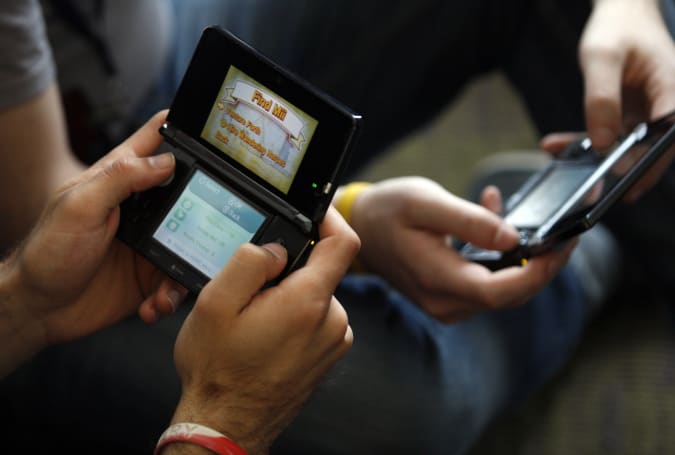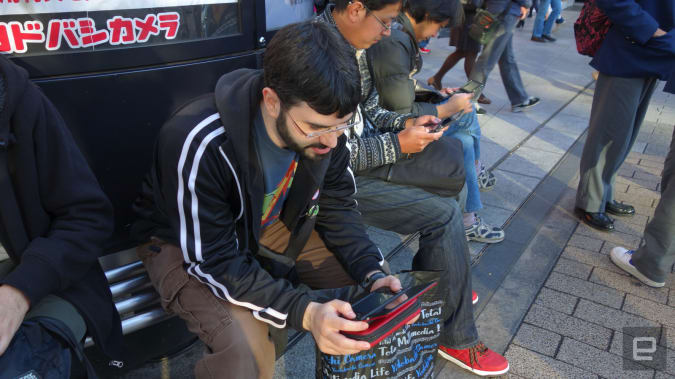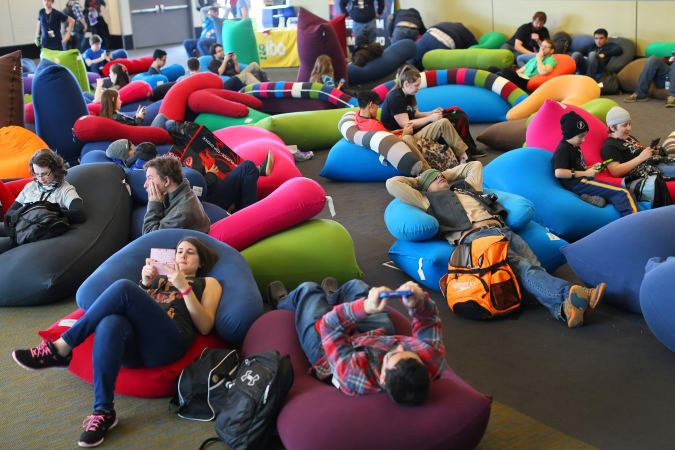[ad_1]
Ten years ago today the 3DS debuted in Japan. It followed the DS family and the big selling point for this third generation of Nintendo’s dual-screened systems was the addition of 3D graphics. And yet, what people remember most about the 3DS isn’t that feature; in fact, many folks just turned the 3D off once the novelty wore away. For myself and many others, the most memorable feature was StreetPass. Yes, StreetPass.
In case you’ve already forgotten, StreetPass was a social feature built into the handheld where, once it was enabled, allowed the 3DS to passively exchange information with other systems in the immediate area. Players could create a Mii character that would travel to other handhelds, and could then be used by the other player (and vice versa) within several games within the Mii Plaza and beyond. The dungeon-crawler ‘Find Mii’ was probably the most famous of these since it was included with the system, but I was particularly enamored of some of the ones you could purchase, like gardening title ‘Flower Town’ and ‘Feed Mii,’ a cooking simulator.

Nintendo
If you really have no strong feelings about StreetPass, it’s likely you’re one of the many people who got little use out of it. The feature worked great in densely populated areas like Tokyo, but less so in a country like the United States where most people drive to work.
I live in New York and until recently I was a regular commuter on the subway. During the heyday of the 3DS, I could expect to pick up a handful of StreetPass tags daily, loading them into my system and going through Puzzle Swap and other games on the way home from work. The gameplay wasn’t very deep, but it didn’t really have to be — it was perfect for a few minutes distraction on public transportation. Inversely that made it terrible for people who didn’t take public transportation, as their 3DS time was more likely to be at home, directly competing against consoles and computers with deeper gameplay. The Mii Plaza games just came across as shallow in comparison.

Jessica Rinaldi / reuters
However, gamers are usually ripe for a challenge and, for many, StreetPass became a pastime in itself. My ex and I used to head out to McDonald’s on specially-announced ‘StreetPass Weekends’ to grab the Miis of celebrities and Nintendo employees from the stores’ SpotPasses, and sometimes we’d walk past playgrounds and gyms in the hope that teens would have a 3DS stowed away in their bag. Living in the same city as the Nintendo World store was a big plus. Airports were also a bonanza, especially internationally — my ex even lent me his 3DS on one of my solo trips to Europe, so I could snag him foreign StreetPasses. So I was carrying around two systems in my backpack for over a week, and I managed to link up with people from countries like Austria and Slovakia.
Of course, all of this paled in comparison to the bonanza that awaited us in the 3DS’s home country of Japan, specifically in Tokyo. The two of us would get on the metro and the notification light would go off; a train would pass in the opposite direction and the light would go off again. Yodobashi Camera in Akihabara ended up being a bonanza; we walked outside the store around noon and found a specially-designed area (with signage!) for StreetPass exchange. Dozens of people sat or stood in the area, loading up Miis, playing through the mini games, and then loading up even more. Once the deluge slowed to the trickle my ex walked around with his 3DS to grab any we missed and several Japanese people laughed out loud, because well, he’s a bearded white dude with a bearded white Mii.

Kris Naudus
This kind of joy of connection wasn’t something that people outside of Japan got a lot of mileage out of, unless they were the very specific kind of gamer who took their 3DS systems to conventions. Conventions were the mother load for StreetPass collection, from comic conventions like San Diego to video game-themed shows like PAX. In those cases the 10 StreetPass-at-a-time limit seemed less ambitious and more stingy as standing in one place for a few minutes could yield dozens, if not hundreds of tags. You could easily spend the whole event just clearing out your queue, and I did in fact, pass a lot of time on long lines or in boring panels doing just that.
Unfortunately, Nintendo realized the potential of these gatherings too late. While it did use events like PAX to release new Puzzle Swap art, the company didn’t introduce features catered toward dedicated StreetPass collectors until 2016, five years into the system’s lifespan — and one year short of the release of its replacement, the Switch. At that point you could pay to upgrade your StreetPass queue to 100 slots, allowing you to passively gather StreetPass tags at events and play with them later. This was a paid feature which certainly limited its appeal, but the kind of people who would take their 3DS to large events, and the kind of people who would go to video game shows, period, are also the type who wouldn’t mind coughing up an extra $10 for the convenience of better StreetPass management (probably also the type who pay for Pokémon Bank).

Boston Globe via Getty Images
In the end I built a collection to be proud of: 50 states and territories in the US (only missing North and South Dakota), all of Canada, 30 prefectures of Japan, and parts of dozens of other nations, including Spain, France, Germany, Denmark, Mexico, Brazil and South Korea. I’ve also collected almost every possible birthday too (another feature added as a premium later on). And of course there are the Miis themselves, 3,660 tags of all variety of body shapes and colors and costumes — the more dedicated StreetPassers would even use the customized greeting to tag the events they were at, so you know you grabbed this Mii from New York Comic Con or that Mii from PAX South. In a way my Mii Plaza serves as a sort of digital passport, of the countries I’ve visited, the events I’ve attended and the people I’ve encountered, if only fleetingly. I love my Switch, but I miss the challenge and community of the 3DS StreetPass system.
[ad_2]
Source link